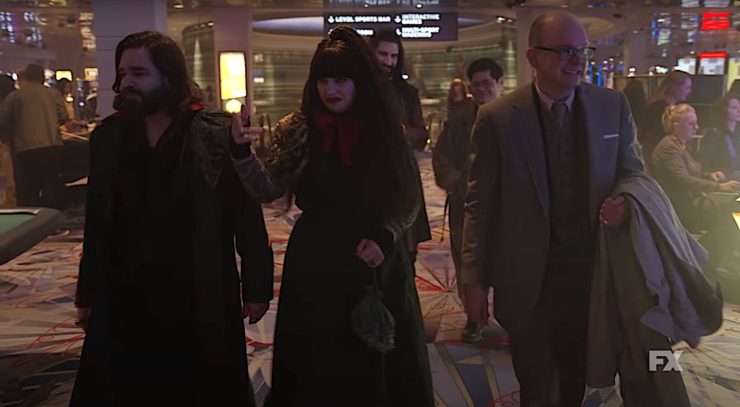It would have been easy to make What We Do in the Shadows a hangout sitcom. One of those pleasant, easy half-hours where the viewer checks in to see what wacky adventures the vampires get up to this week. They are, after all, immortal. There is plenty of guaranteed humor to be mined from placing a character like Nandor the Relentless or Laszlo Cravensworth in modern New York, and just, like, coasting. Play up some local humor about how Staten Island is a bit different from the other four boroughs of New York. Send the gang on a road trip, to a community board meeting, to a baseball game. Use Colin Robinson’s role as an energy vampire to do a slightly gothier take on The Office, week after week. Keep mining Guillermo for the nerdy frustration of being a familiar. After all, the show did variations on these ideas in their first seasons, and created some of the best horror comedy of recent years. If they had decided to be a hangout show, they would have made an incredible hangout show.
Instead, the writers have committed to some of the most subtle, gradual character growth I’ve seen on television.
Over the ten episodes of this season, we got Nadja and Nandor as co-leaders of the vampiric council, some fun side adventures with Laszlo and Colin Robinson, another year of plausible change for Guillermo, and then, somehow, miraculously, this ridiculous show made me feel things in its last two episodes. We got Nandor learning about the Big Bang Theory because of a casino game based on The Big Bang Theory. We got multiple examples of Laszlo being a surprisingly good friend to his human neighbor, Sean, who really needs to be in counseling of some kind. We got even more celebrity vampires, plus a possessed doll, plus a hellhound.
I’m going to get into spoiler territory in a second, so let me sum up by telling you that if you watched Season 2, Season 3 is even better? And if you haven’t watched any of it yet, you have an excellent 30 hours of TV ahead of you.
Spoilers ahead!
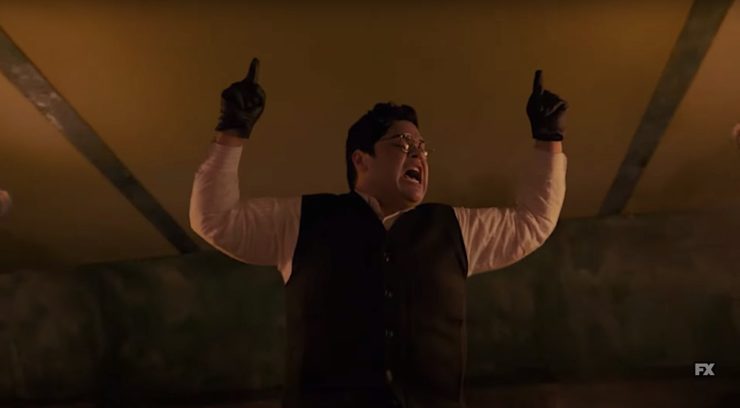
The season opens with Guillermo imprisoned in the basement, as the vampires weigh the fact that he’s a vampire hunter against the fact that his vampire staking skills saved their lives. The show immediately undercuts any concern by showing us that, naturally, the vampires have botched the prison, and Guillermo escapes each morning to clean the house and buy food while they’re asleep. But this absurd situation leads to the first dramatic change of the season: Nandor convinces his roommates to release Guillermo, to promote him from familiar to bodyguard, and to generally regard him as a member of the team. This highlights the fine balance WWDITS maintains through Season 3. Again and again, the show presents a scenario that, in a normal vampire story, would be quite serious, only to immediately make said scenario silly, only to then twist the silliness back into a serious consequence.
Nadja’s haunted doll runs away with a bindle over her shoulder, and her spirit jumps from host to host until she’s inside one of those huge inflatable protest rats. Ridiculous! But then Nandor punctures the rat, and Ghost!Nadja announces she doesn’t have the strength to make another jump. Is she going to have to leave Nadja and move on to another realm? But then it turns out she can go back to her original doll! But then the argument she and Nadja have been having throughout the episode results in both women realizing they need to confront their emotions and process their stress better, which sets up the season finale. Serious!
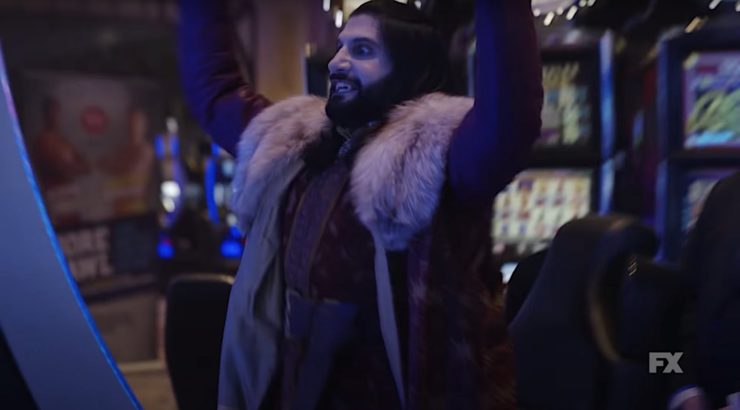
Or, in another instance, Nandor plays a Big Bang Theory-themed game at a casino, which leads to Colin Robinson explaining the actual Big Bang Theory, which in turn forces Nandor to question everything he’s ever believed about the universe, and his place in it, for the first time in 700 years. Seriously. This seeds the late-season existential crisis that results in Nandor joining a cult, attempting to go into a coma-like Super Slumber, and, finally, deciding to leave Staten Island in the season finale. The Nandor who chooses to set out on a global tour is a far cry from the childish vampire who wanted to decorate the house with “creepy paper” two seasons ago—or even the one who couldn’t navigate Atlantic City.
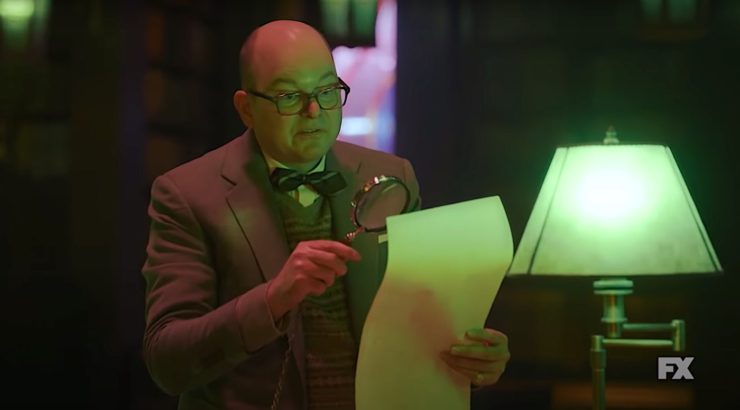
But maybe the biggest change comes for Colin Robinson. I’ll admit I was a little confused at Laszlo’s sudden willingness to hang out with the energy vampire. Maybe more astute viewers noticed the tiny clues that something was amiss, but I was so delighted by their buddy comedy pairing that I didn’t question it, and Laszlo’s announcement of Colin Robinson’s impending death was an actual shock. If you don’t mind me breaking this rollercoaster down to its individual cars: Laszlo announces that Colin Robinson will be dead by the end of his 100th birthday, i.e., that very day—I assume this is yet another ruse on CR’s part; Laszlo explains that he found the truth in the archives, hid it from Colin, and has spent most of the season trying to give him a good last few months—I begin to suspect this is real; Colin Robinson announces his tummy is upset—fuck this is real; the vampires and Guillermo sit with Colin Robinson on his depressing, gassy deathbed—this is hilarious, but real; Guillermo runs to get Nandor, but they come back too late, and Colin Robinson is dead—this is weirdly effective? I’m sad, somehow (???); Nandor insists it’s another ruse—haha, I was right! This isn’t real! Nandor’s going to shake him awake after all!; Nandor accidentally punches a hole into Colin Robinson’s head, and goo spurts out everywhere—this is real, Colin Robinson is definitively dead, and I’m sad, but this is the grossest, funniest thing I’ve seen in a long time, and I love it.
Why this ridiculously long play-by-play? Because the next episode opens with the vampires getting a new portrait painted without Colin Robinson—a vampiric tradition for processing loss. Seeing the credits sequence zip by with all instances of Colin pointedly removed was, again, weirdly, unexpectedly, emotional? I felt like Jackie Daytona watching a girls’ volleyball match or something.
Given that, it would make sense that, when the show reverses the loss in the finale, revealing that a baby has burst from Colin Robinson’s chest who looks just like a small Colin Robinson, maybe it would feel like a cheat. Instead, because the writers have been so careful with their balancing act throughout the season, and so respectful of their viewers’ intelligence, that the only thing I felt was glee at the prospect of watching Laszlo of all undead people try to cope with a baby energy vampire. The reversals of both Nandor’s Super Slumber and Colin Robinson’s death felt emotionally true. The shock of seeing Nandor accidentally put his fist through Colin’s face worked beautifully as a reset button. It was funny and gross and deeply awkward, but it also pushed Nandor to change. And it meant that when it’s finally revealed that Colin has been reborn as a baby, rather than feeling cheap, it was a relief that we got a sequel to his smushed head.
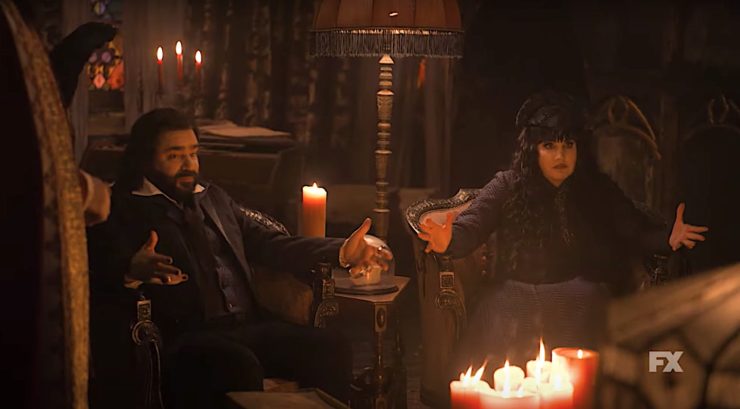
The finale did the exact thing you want: It was the culmination of a lot of threads, but it also promises three new plotlines that would have been impossible to imagine at the beginning of Season 3. Are we going to follow Nandor on a solo global adventure? Will Nadja and Guillermo work out as colleagues in London? How the hell is Laszlo going to act as a father to a baby energy vampire?
The fantastic thing is that I’ve come to trust this show so much—I won’t even mind if the writers handwave all of these plot points and go in different directions entirely. They’ve made these characters real and layered enough that I’ll follow them anywhere, even if it’s just back to Staten Island.
I mean, on the show. I’m not going to Staten Island in real life.










